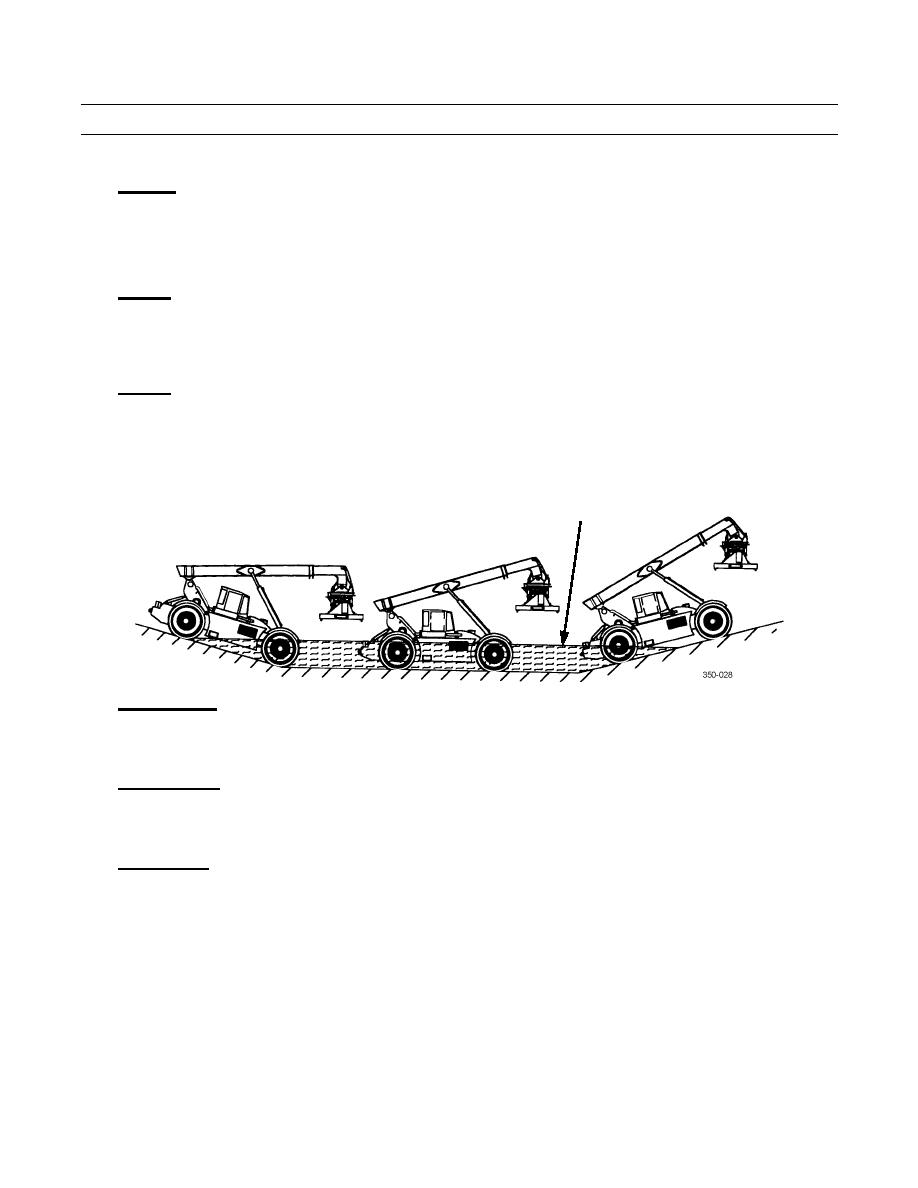
TM 10-3930-675-10-1
OPERATION UNDER UNUSUAL CONDITIONS - CONTINUED
0006 00
OPERATE ON SNOW AND ICE - CONTINUED
0006 00
2.
Stopping.
a. Ease up on accelerator, leaving vehicle in gear.
b. Apply service brakes lightly and evenly. DO NOT pump service brake pedal.
c. Always avoid sudden braking.
3.
Parking. If parking on icy, slushy, wet, or muddy surfaces, place boards, brush, or other materials that will provide trac-
tion underneath tires. This will guard against tires freezing to the ground or becoming pocketed in ice and will provide
some traction when vehicle is started and moving again.
FORDING
0006 00
General.
1.
a. Maximum fording depth is 5 ft (1.5 m).
b. Minimize the amount of turning, if possible.
FORDING
LINE
2.
Before Fording.
a. Ensure engine is operating properly and all gages are indicating normal operating pressures and temperatures.
b. Lubricate unpainted surfaces to guard against rust and deterioration.
3.
During Fording.
a. Place transmission in lower gear ranges and enter water slowly.
b. Ford at speeds of 3 to 4 mph (5 to 6 kph).
4.
After Fording.
a. Allow engine to run to drive out any accumulated water.
b. Drain and dry any area where water has accumulated.
c. Check all fluids for signs of contamination and for proper levels.
d. Lubricate all grease fittings below water line.
e. If RTCH has operated in salt water, rinse the entire vehicle with fresh water as soon as possible.
f. Notify Organizational Maintenance to remove drain plug from engine flywheel housing and check for signs of water.
END OF WORK PACKAGE
0006 00-8

